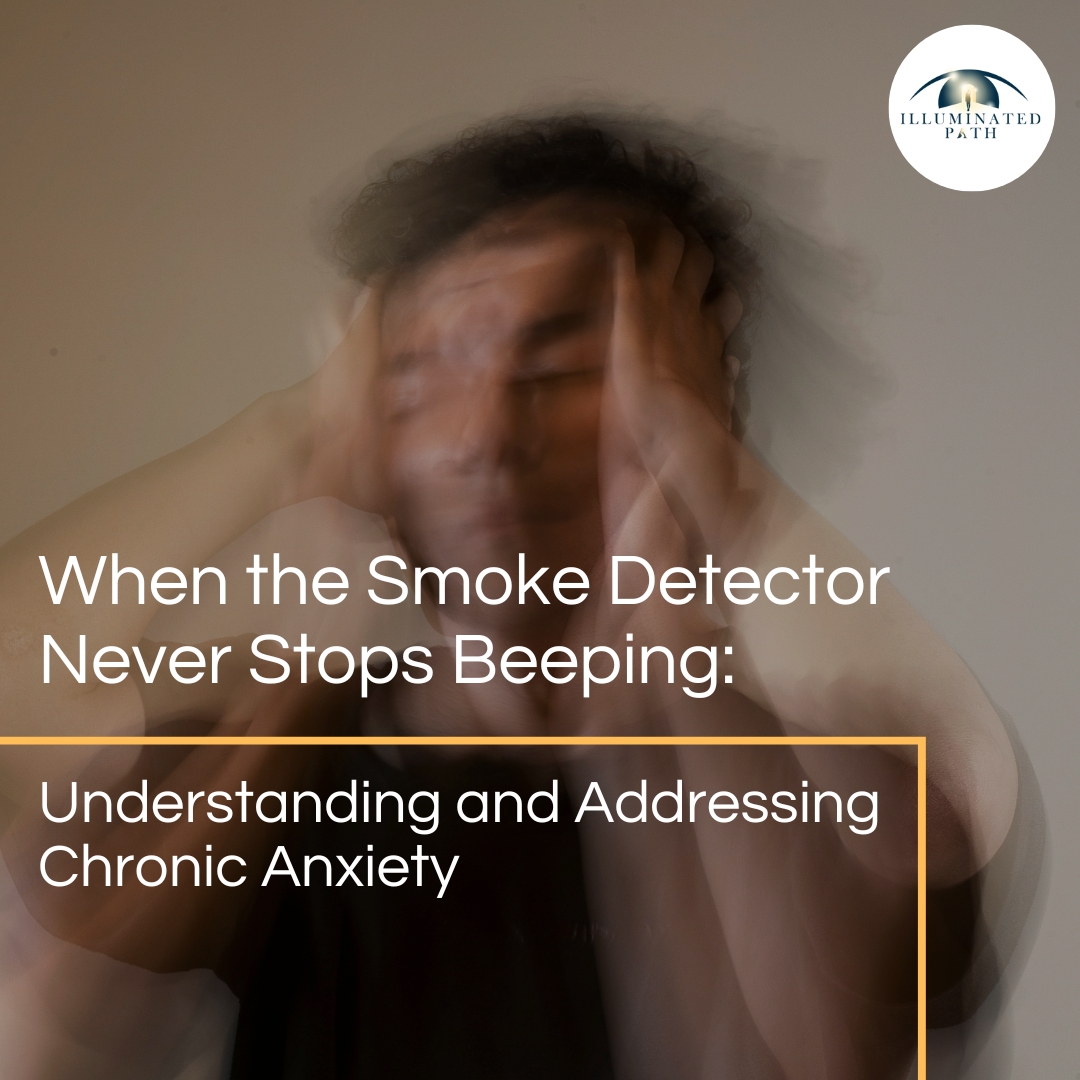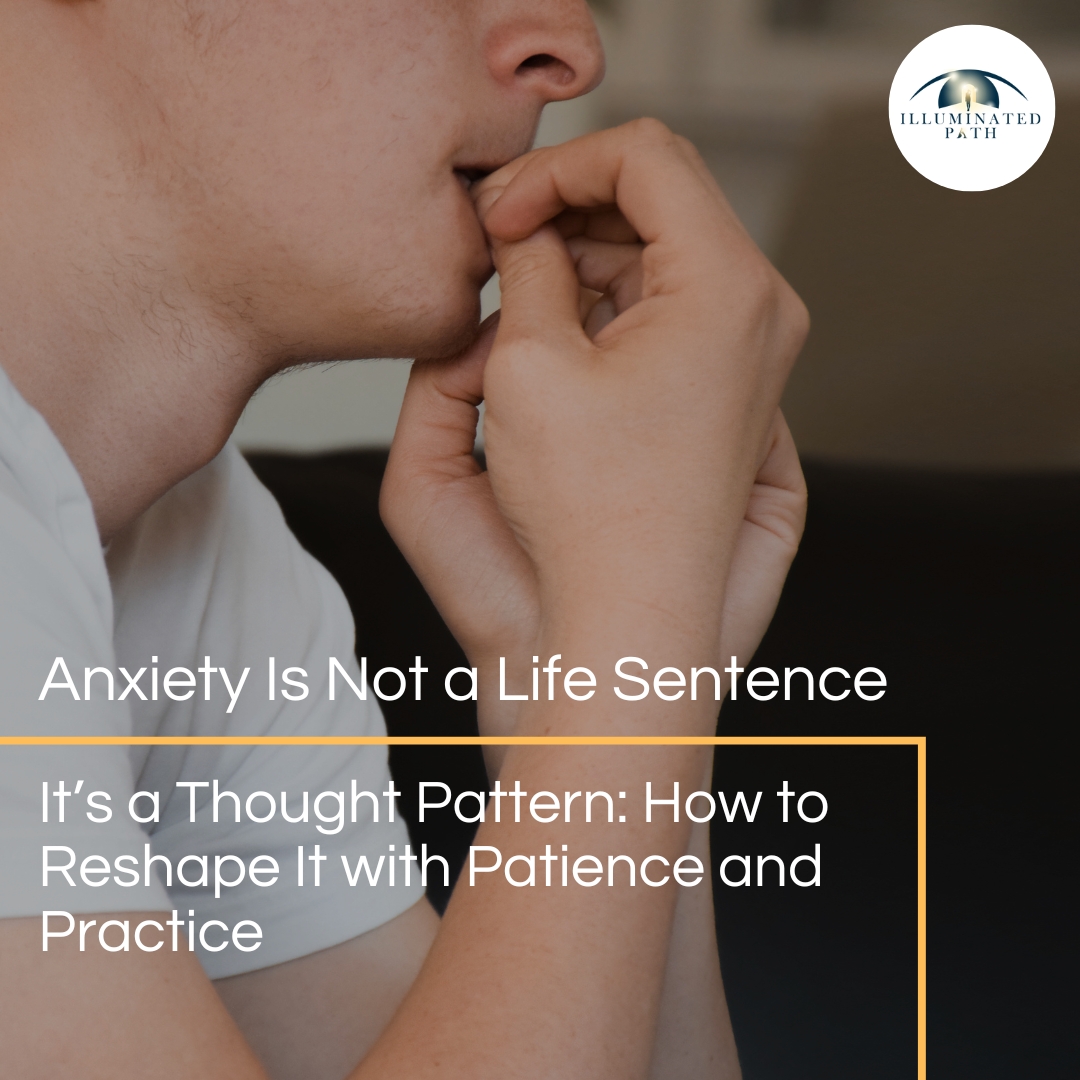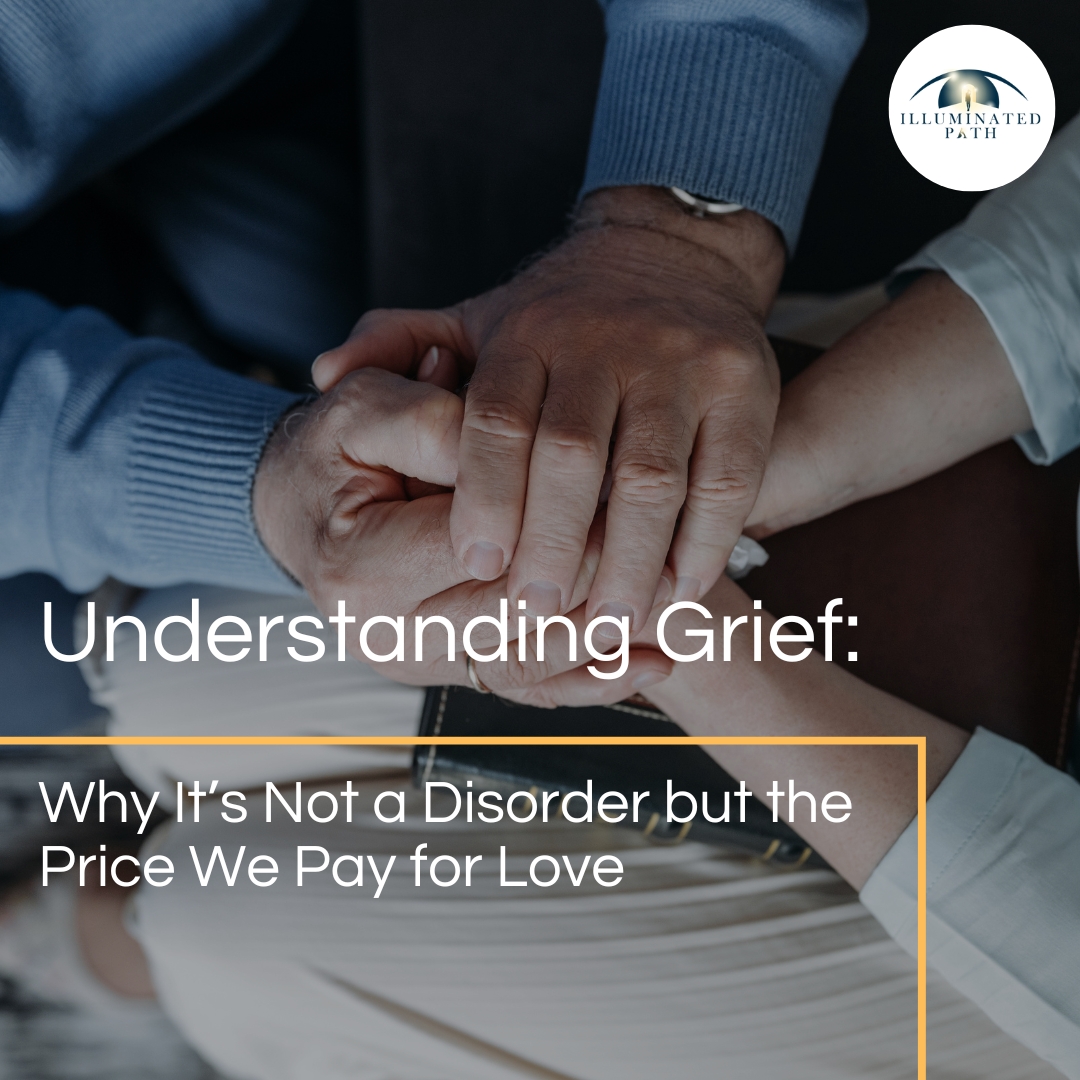
Daniel Goleman, the renowned expert on emotional intelligence, offered a potent analogy for understanding anxiety: “Anxiety is the mind’s smoke detector – sometimes it warns of real danger, often it’s just burnt toast. Learn to tell the difference.” This simple yet profound statement encapsulates a crucial aspect of navigating our inner world. However, what happens when the smoke detector malfunctions, relentlessly blaring even in the absence of smoke, or worse, when the “burnt toast” triggers a full-blown, ear-splitting alarm? This is the realm of chronic anxiety, a persistent and often debilitating condition that extends far beyond occasional worries or fleeting moments of unease.
For those living with chronic anxiety, Goleman’s wisdom, while insightful, can feel like a distant shore. The constant barrage of anxious thoughts, physical sensations, and anticipatory dread makes it incredibly difficult to discern between genuine threats and the mind’s overactive imagination. The smoke detector, meant to be a helpful guardian, becomes a tyrannical overlord, dictating every thought and action, casting a long shadow over daily life.
This article delves into the multifaceted nature of chronic anxiety, exploring its profound impact, the critical juncture where professional help becomes essential, potential underlying causes, effective treatment options, and ultimately, how to begin the journey of quieting the incessant alarm and learning to distinguish genuine danger from internal noise.
The Unrelenting Symphony of Chronic Anxiety: A Life Lived on High Alert
Chronic anxiety isn’t merely feeling a bit worried before a presentation or experiencing pre-exam jitters. It’s a pervasive state of apprehension and unease that lingers for extended periods, often months or even years. It’s a constant hum of worry in the background, occasionally escalating into full-blown panic attacks, but always present in some form. This persistent state of hyperarousal can manifest in a myriad of ways, impacting virtually every facet of an individual’s life:
-
Cognitive Landscape: The mind becomes a breeding ground for intrusive thoughts, often negative, catastrophic, or repetitive. Worry becomes a default mode, with individuals constantly scanning for potential threats, real or imagined. Decision-making becomes fraught with difficulty, as every option is weighed against potential negative outcomes. Concentration and focus dwindle, making even simple tasks feel monumental. Memory can also be affected by the constant mental chatter.
-
Emotional Turmoil: Beyond worry, chronic anxiety can fuel a range of negative emotions, including fear, irritability, restlessness, and a sense of being overwhelmed. Individuals may experience a persistent feeling of being “on edge,” unable to relax or find peace of mind. This emotional exhaustion can lead to feelings of sadness, hopelessness, and even contribute to the development of depression.
-
Physical Manifestations: The mind-body connection is undeniable, and chronic anxiety takes a significant toll on physical health. Common symptoms include muscle tension, headaches, stomachaches, digestive issues (like irritable bowel syndrome), fatigue, sleep disturbances (insomnia, restless sleep), rapid heartbeat, sweating, and shortness of breath. These physical symptoms can be distressing in themselves, often exacerbating the underlying anxiety and creating a vicious cycle.
-
Behavioral Adaptations: To cope with the relentless anxiety, individuals may develop avoidance behaviors. They might start avoiding social situations, work responsibilities, or even everyday activities that trigger their anxiety. This avoidance, while providing temporary relief, ultimately limits their lives, shrinks their world, and reinforces the anxiety. Other maladaptive coping mechanisms, such as excessive reassurance seeking, procrastination, or engaging in rituals, may also emerge.
-
Impact on Relationships: Chronic anxiety can strain interpersonal relationships. Irritability, difficulty relaxing and enjoying time together, and avoidance behaviors can lead to misunderstandings and conflict. Loved ones may struggle to understand the intensity of the anxiety and may feel helpless or frustrated.
The cumulative effect of these symptoms can be profoundly debilitating. Individuals with chronic anxiety may find it difficult to perform at work or school, maintain healthy relationships, pursue their hobbies, or simply enjoy life. The constant internal struggle can lead to feelings of isolation, shame, and a diminished sense of self-worth.
When the Alarm Bells Demand Attention: Recognizing the Need for Professional Help
While everyone experiences anxiety to some degree, chronic anxiety is qualitatively and quantitatively different. It’s not something that can be simply “willed away” or overcome with positive thinking alone. Recognizing when the “smoke detector” is malfunctioning to the point of requiring professional intervention is a crucial step towards recovery. Here are some key indicators that suggest it’s time to seek help:
- Persistence and Intensity: The anxiety is persistent, lasting for several months or longer, and its intensity significantly interferes with daily functioning.
- Impairment of Daily Life: Anxiety makes it difficult to perform everyday tasks at work, school, or home. It impacts concentration, productivity, and overall performance.
- Relationship Strain: Anxiety is negatively affecting relationships with family, friends, or romantic partners, leading to conflict, avoidance, or isolation.
- Physical Symptoms: Physical symptoms associated with anxiety are frequent, severe, and causing significant discomfort or concern.
- Avoidance Behaviors: You find yourself increasingly avoiding situations or activities that trigger anxiety, leading to a restricted lifestyle.
- Difficulty Controlling Worry: You feel overwhelmed by your worries and find it difficult to control or stop the flow of anxious thoughts.
- Panic Attacks: You experience recurrent panic attacks – sudden episodes of intense fear accompanied by physical symptoms like rapid heartbeat, dizziness, and shortness of breath.
- Co-occurring Conditions: You suspect or have been diagnosed with other mental health conditions, such as depression or substance use disorders, which often co-occur with anxiety.
- Decreased Quality of Life: Overall, your anxiety is significantly impacting your enjoyment of life, your sense of well-being, and your ability to pursue your goals.
Acknowledging the need for help is not a sign of weakness but rather an act of self-awareness and strength. Chronic anxiety is a treatable condition, and seeking professional support is the first step towards regaining control and silencing the incessant alarm.
Unraveling the Roots: Exploring Potential Underlying Causes of Chronic Anxiety
The development of chronic anxiety is rarely attributable to a single cause. Instead, it typically arises from a complex interplay of genetic, biological, psychological, and environmental factors. Understanding these potential contributing factors can provide valuable insights into the nature of one’s anxiety:
- Genetics and Family History: There is evidence to suggest that a predisposition to anxiety disorders can be inherited. Individuals with a family history of anxiety or other mental health conditions may be at a higher risk.
- Brain Chemistry: Imbalances in certain neurotransmitters, chemical messengers in the brain that regulate mood and emotions, such as serotonin, GABA, and norepinephrine, are believed to play a significant role in anxiety disorders.
- Temperament and Personality: Certain personality traits, such as high neuroticism (a tendency towards negative emotions) or behavioral inhibition (shyness and withdrawal in new situations), may increase vulnerability to anxiety.
- Early Life Experiences: Traumatic or stressful experiences in childhood, such as abuse, neglect, loss of a parent, or witnessing domestic violence, can have a lasting impact on the development of anxiety.
- Learned Behaviors: Anxiety can also be learned through observation or direct experience. For example, growing up in a household where worry and fear were prevalent can normalize anxious responses.
- Chronic Stress: Prolonged exposure to stressful life events, such as financial difficulties, relationship problems, work-related stress, or chronic illness, can overwhelm coping mechanisms and contribute to the development of chronic anxiety.
- Physical Health Conditions: Certain medical conditions, such as thyroid disorders, heart problems, and respiratory illnesses, can sometimes mimic or exacerbate anxiety symptoms.
- Substance Use: While some individuals may turn to substances like alcohol or drugs to cope with anxiety, in the long run, substance use can worsen anxiety symptoms and lead to dependence.
It’s important to remember that these factors often interact in complex ways, and the specific causes of chronic anxiety can vary from person to person. A thorough assessment by a mental health professional can help to identify potential contributing factors in an individual’s case.
Finding Your Path to Peace: Effective Treatment Options for Chronic Anxiety
Fortunately, a range of effective treatment options are available for individuals struggling with chronic anxiety. The most appropriate approach often involves a combination of therapy, medication, and lifestyle modifications:
-
Psychotherapy (Talk Therapy): Various forms of therapy have proven highly effective in treating anxiety disorders. Some common approaches include:
- Cognitive Behavioral Therapy (CBT): CBT focuses on identifying and challenging negative and unhelpful thought patterns that contribute to anxiety. It also teaches practical coping skills for managing anxiety-provoking situations.
- Exposure Therapy: This type of CBT involves gradually and systematically exposing individuals to feared situations or objects in a safe and controlled environment to reduce avoidance behaviors and desensitize them to anxiety triggers.
- Acceptance and Commitment Therapy (ACT): ACT focuses on accepting anxious thoughts and feelings rather than trying to eliminate them, while committing to values-driven actions that create a meaningful life.
- Psychodynamic Therapy: This approach explores unconscious conflicts and past experiences that may be contributing to current anxiety patterns.
-
Medication: In some cases, medication can be a valuable tool in managing the symptoms of chronic anxiety, particularly when combined with therapy. Common types of anxiety medications include:
- Selective Serotonin Reuptake Inhibitors (SSRIs) and Serotonin-Norepinephrine Reuptake Inhibitors (SNRIs): These are often the first-line medications for anxiety disorders and work by regulating neurotransmitter levels in the brain.
- Benzodiazepines: These medications have a calming effect and can provide rapid relief from acute anxiety symptoms or panic attacks. However, due to their potential for dependence, they are typically prescribed for short-term use.
- Other Medications: Depending on the specific type of anxiety disorder and individual needs, other medications, such as buspirone or beta-blockers, may also be considered.
- Selective Serotonin Reuptake Inhibitors (SSRIs) and Serotonin-Norepinephrine Reuptake Inhibitors (SNRIs): These are often the first-line medications for anxiety disorders and work by regulating neurotransmitter levels in the brain.
-
Lifestyle Modifications and Self-Care: In addition to professional treatment, adopting healthy lifestyle habits can significantly contribute to managing chronic anxiety:
- Regular Exercise: Physical activity has been shown to have a powerful impact on mood and anxiety levels.
- Mindfulness and Meditation: Practices like mindfulness meditation can help individuals become more aware of their thoughts and feelings without judgment, reducing the tendency to get caught up in anxious rumination.
- Adequate Sleep: Getting sufficient and restful sleep is crucial for both physical and mental well-being.
- Healthy Diet: Nourishing the body with a balanced diet can support overall mental health.
- Stress Management Techniques: Learning and practicing stress-reducing techniques, such as deep breathing exercises, progressive muscle relaxation, or yoga, can be beneficial.
- Social Support: Connecting with supportive friends and family members can provide a sense of belonging and reduce feelings of isolation.
- Limiting Caffeine and Alcohol: These substances can often exacerbate anxiety symptoms.
The journey of addressing chronic anxiety is often a marathon, not a sprint. It requires patience, self-compassion, and a commitment to the treatment process. Finding the right combination of therapy, medication (if needed), and lifestyle changes may take time and experimentation.
Relearning the Alarm: Cultivating Discernment and Moving Towards Peace
Returning to Goleman’s analogy, the goal of addressing chronic anxiety is not to silence the smoke detector entirely, as anxiety can still serve a valuable purpose in alerting us to genuine threats. Instead, the aim is to recalibrate the alarm, to teach it to accurately distinguish between “real danger” and “burnt toast.” This involves:
- Increasing Self-Awareness: Through therapy and self-reflection, individuals can learn to identify their specific anxiety triggers, the patterns of their anxious thoughts, and the physical sensations they experience.
- Developing Cognitive Skills: CBT and other therapies equip individuals with tools to challenge and reframe negative thought patterns, reducing the tendency towards catastrophic thinking.
- Building Emotional Regulation Skills: Learning to manage intense emotions in healthy ways can reduce the likelihood of anxiety escalating into overwhelming distress.
- Practicing Mindfulness: Cultivating present moment awareness can help individuals detach from anxious thoughts and observe them without judgment, diminishing their power.
- Gradual Exposure: Facing feared situations in a controlled manner can help to break the cycle of avoidance and reduce the anxiety associated with those situations.
Ultimately, the journey of addressing chronic anxiety is about reclaiming control over one’s inner world. It’s about moving from a state of constant hypervigilance and fear to one of greater peace, resilience, and the ability to navigate life’s challenges with a more balanced and discerning perspective. While the “smoke detector” may still occasionally sound, with understanding, support, and effective strategies, individuals can learn to interpret its signals accurately, respond appropriately, and live a life no longer dominated by the incessant beeping of unwarranted alarm. The path to a quieter mind and a more fulfilling life is possible, even when the initial silence seems a distant dream.

The Author
Dr. Shadi Souferian Psy. D.
Licensed Clinical Psychologist
Therapist And Psychologist in Los Angeles And Beverly Hills.






